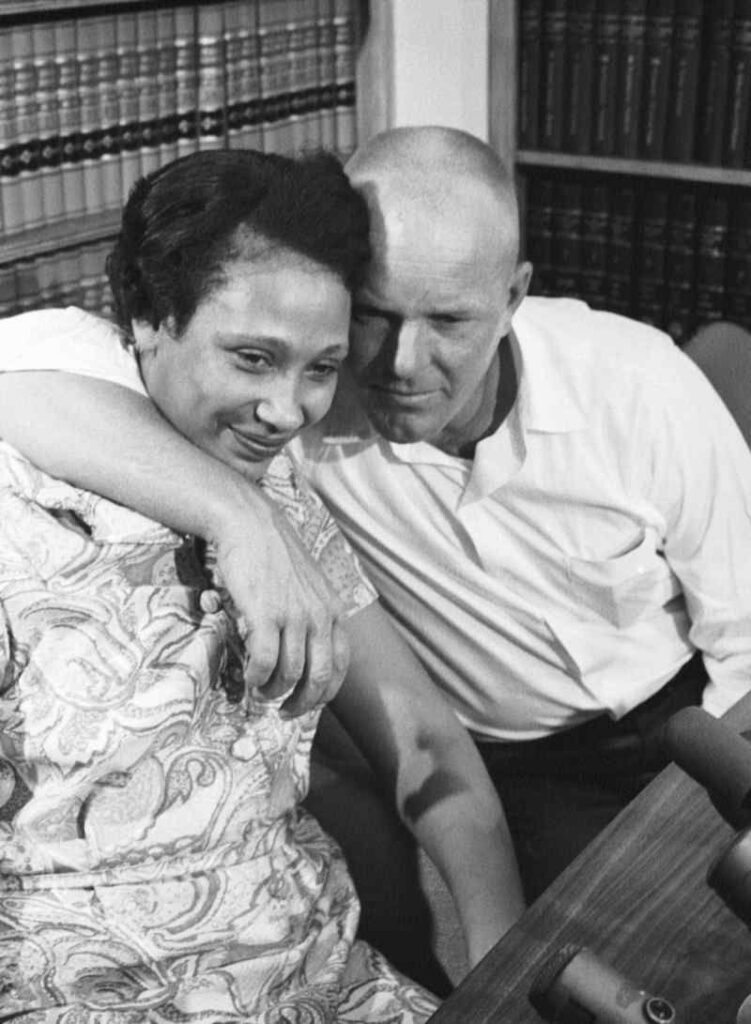Fifty-four years ago is not long at all.
For many of us here at Neighborhood House, our parents had already taken their first steps on this planet’s soil. By 1967, satellite television had sent signals to separate continents, bubble wrap became a bored child’s favorite toy, and you could turn your tongue blue with a Slurpee.
But in 1967, 17 states still had anti-miscegenation laws on the books: interracial marriage was still illegal. “Miscegenation” is defined as “the interbreeding of people considered to be of different racial types.” Not only were interracial marriages criminalized (with charges as severe as a felony), but sexual relations and cohabitation between individuals of different races was also outlawed.
These brutal and nonsensical laws were an added layer to the white supremacist rules and enforced social order that permeated the communities and minds of individuals of color, and their loved ones who may not share the same race. Looking back now, we can see that this was a tool to keep the races segregated; to dehumanize interracial couples and their children; and to control a complex human emotion that humanity shares and often knows no bounds: love.
In 1958, Mildred Loving (née Jeter, a Black woman) and Richard Loving (a white man) wed in Washington D.C. to avoid being punished under Virginia’s laws against interracial marriage (titled the Racial Integrity Act, to keep Caucasian blood “pure”). The pair were arrested upon their return to their home state, with a judge offering to suspend their sentence if the Lovings left Virginia and did not re-enter the state for 25 years. In 1963 while living in D.C., the Lovings decided to appeal the judgement. Two years after that, Judge Leon Bazile defended his original decision stating, “Almighty God created the races white, black, yellow, Malay, and red, and placed them on separate continents, and but for the interference with his arrangement there would be no cause for such marriages. The fact that he separated the races shows that he did not intend the races to mix.”

Most people at the time shared his same sentiment: a Gallup poll taken in 1968 showed that 72% of Americans disapproved of interracial marriage. Comparing that to other countries, 21% of Swedes disapproved, 23% of those living in the Netherlands, and just over a third of those in France expressed their displeasure. While residents in Canada, Great Britain, and West Germany all recorded more opposition to the idea than in favor, none of the countries surveyed outweighed the United States in disapproval. In 2013, Gallup reported that 87% of Americans approved of interracial marriage, however, the question was specific to Black-White marriage relations.
The Lovings were not going to go down without a fight, and we are grateful for them and their love and bravery. They challenged the ruling, and after not being satisfied with the decision of the Supreme Court of Virginia, they took their case to the United States Supreme Court. Today, we celebrate Loving Day every June 12 to commemorate the anniversary of the 1967 U.S. Supreme Court Decision in Loving v. Virginia, which ruled that anti-miscegenation were unconstitutional. To put it into perspective, the Civil Rights Act was passed three years prior in 1964.
The Multicultural / Multiethnic Affinity Group would like to invite fellow Neighborhood House staff to celebrate and discuss the Lovings and the history of multiethnic people with us during our 6/22/21 group meeting. Loving (2016) is currently streaming on Netflix, and is available to rent or buy on YouTube or Apple TV. The film highlights the couple as they take on the U.S. Supreme Court in the landmark decision that would shape and influence our country for generations to come.
For further information on the history of mixed and multicultural individuals in the United States, we encourage you to visit www.lovingday.org, where you can read stories, find resources, and access to other valuable material.
By Jazmine Chilo, Community Health Case Manager II
